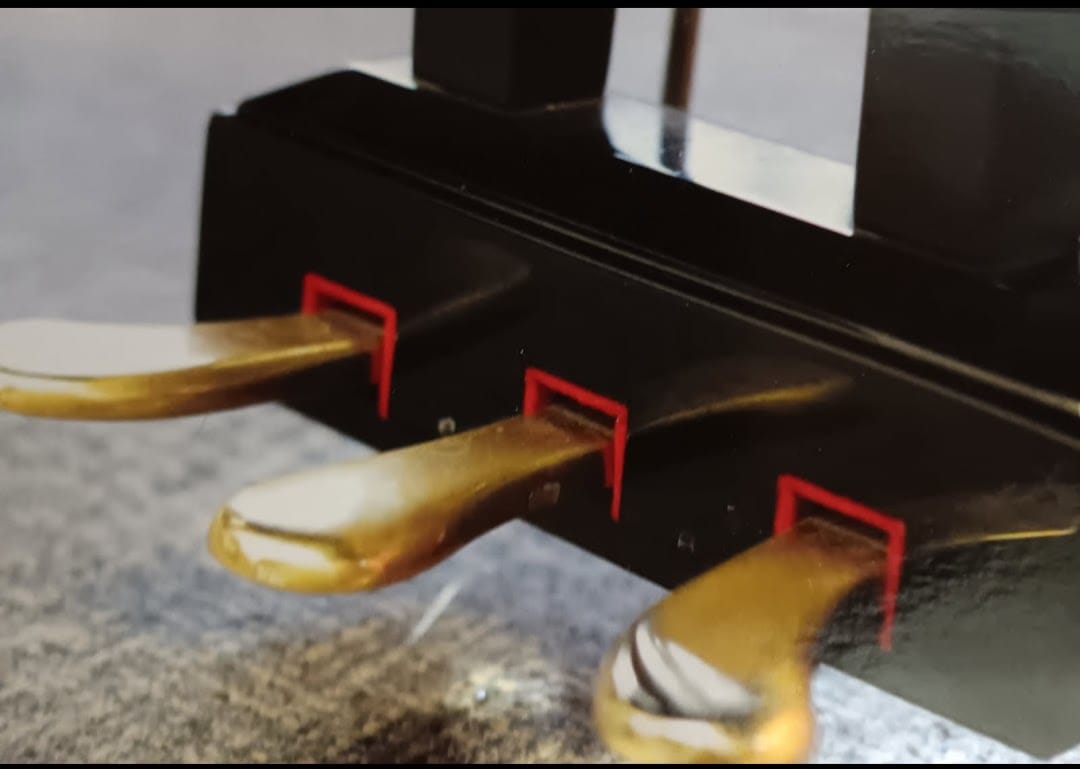How does sound get from the piano to your ear?
Science!

Me at Baker’s Keyboard Lounge, Detroit, Michigan
A person sits down at the piano.
The person pushes a key down with sufficient force.
With the help of a series of levers, a felt-tipped hammer hits two or three strings simultaneously.
This action causes those strings to vibrate.
The vibration changes the air pressure around the strings.
The change in air pressure produces a longitudinal wave (all sound waves are longitudinal waves).
Sound waves need a medium to travel.
That wave “travels” via air to your outer ear, then your ear drum.
Your ear drum vibrates, producing signals that reach the three smallest bones in your body—the malleus, the incus, and the stapes.
The vibrations from the stapes are sent to the cochlea in the inner ear, which contains fluid. The movement of the fluid in the cochlea triggers tiny hair cells that convert the mechanical energy into electrical signals.
An electrical signal is sent from the inner ear to the vestibulocochlear nerve to the brain.
When the signal reaches the brain, it is registered as “sound”.
If you like the sound, if it resonates with you, then we call it music.
* * * * *
All of my students learn this on the very first day of lessons, and we review it every time we have professional development seminars and workshops.
Contact us at ThePianoInstructorConsulting@gmail.com or call us directly at 313.687.4433.
